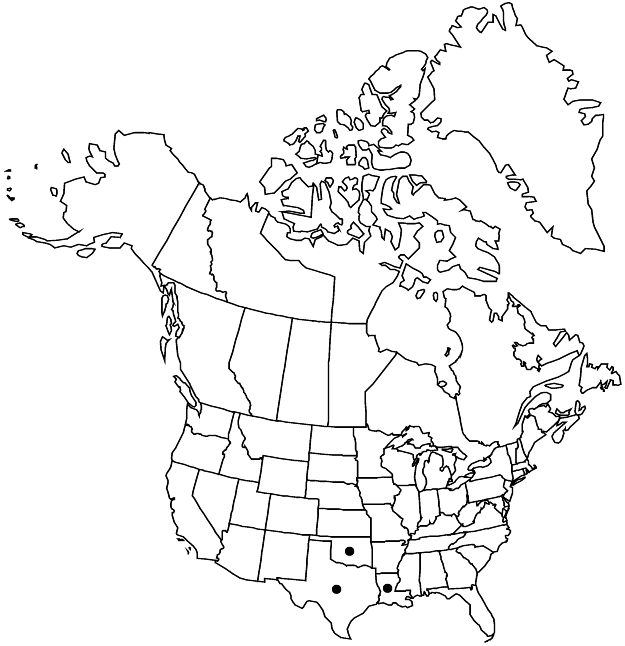Paronychia drummondii
Fl. N. Amer. 1: 170. 1838.
Plants annual or biennial; taproot filiform to slender. Stems sprawling t2o erect, nearly simple to much-branched especially distally, 7–35 cm, retrorsely pubescent on 1 side or throughout. Leaves: stipules lanceolate to ovate, 5–10 mm, apex acuminate, entire; blade linear-oblong to oblanceolate, 5–30 × 1–7 mm, leathery, apex acute to cuspidate, moderately antrorsely pubescent. Cymes terminal, 25+-flowered, much-branched but congested, clusters 5–20 mm wide. Flowers 5-merous, ± short-campanulate, with prominently enlarged hypanthium and calyx flaring distally, (1.5–) 2–2.3 mm, pubescent proximally with short, hooked hairs; sepals greenish to brownish or redbrown, white distally, veins absent, oblong to obovate, 1–1.5 mm, leathery to rigid, margins white, 0.2–0.3 mm wide, papery, apex terminating in divergent awn, hood broadly rounded, awn white, stout-conic, 0.5–0.6 mm, glabrous; staminodes filiform, ± 0.3 mm; style 1, cleft in distal 1/5, 0.3–0.6 mm. Utricles ellipsoid to subglobose, 0.5–0.8 mm, minutely papillate distally.
Phenology: Flowering spring–fall.
Habitat: Sandy woodlands, clearings, roadsides
Elevation: 0-100 m
Distribution

La., Okla., Tex.
Discussion
Chaudhri described two subspecies of Paronychia drummondii based on differences in leaf pubescence, flower size, and style length. We follow B. L. Turner (1983b), who noted that many specimens demonstrate intermediate characteristics, suggesting that taxonomic recognition not be given to the extremes.
Selected References
None.
Lower Taxa
"/10" is not declared as a valid unit of measurement for this property. "/10" is not declared as a valid unit of measurement for this property.